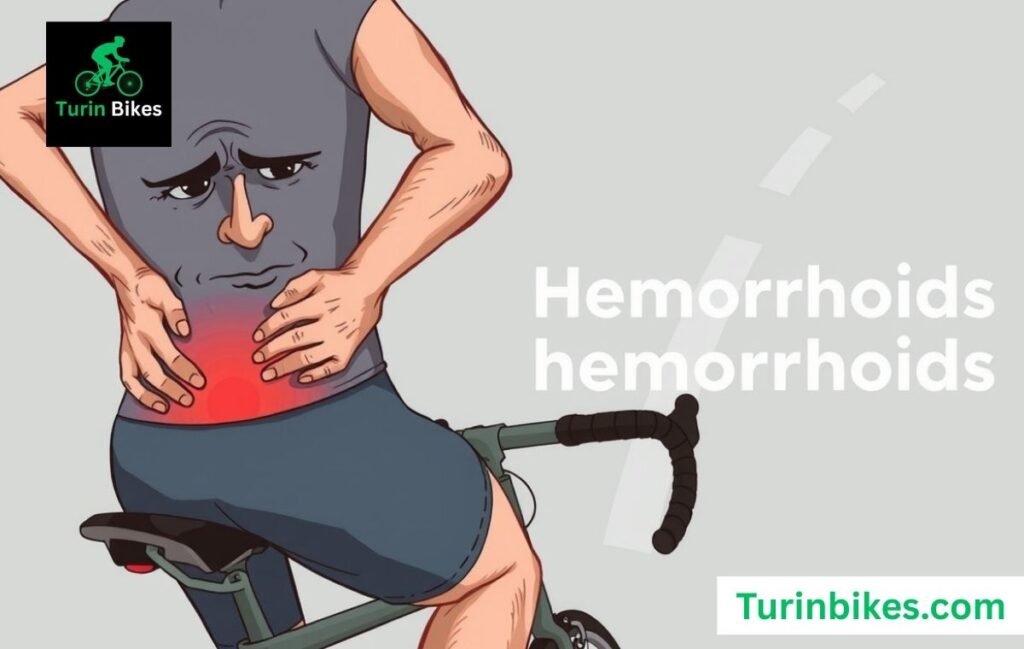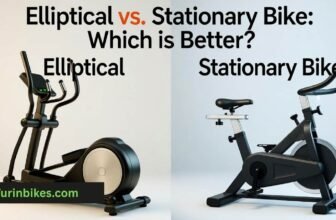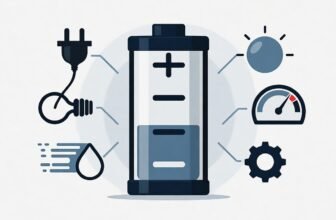
The morning air is crisp as I clip into my pedals, but a sharp, burning pain from cycling and hemorrhoids steals the joy from my ride. I’ve felt the frustration of bike riding and hemorrhoids, wondering if I’d ever enjoy cycling again without discomfort. With the right saddle choice, posture, and preventive care, you can manage cycling and hemorrhoids and keep pedaling pain-free.

What Are Hemorrhoids? (Medical Overview)
Hemorrhoids are swollen veins in the anus or rectum, either internal (inside, often bleeding but painless) or external (under skin, causing pain, itching, swelling). Cycling and hemorrhoids worsen because prolonged sitting pressures veins, amplifying symptoms like discomfort or bleeding. Straining, constipation, or low-fiber diets increase risks, making saddle choice critical for riders.
Source: Mayo Clinic – Hemorrhoids overview
Key Facts About Hemorrhoids
- Types: Internal (inside rectum, may bleed) and external (under anal skin, often painful).
- Symptoms: Pain, itching, swelling, or bleeding during bowel movements.
- Cycling Impact: Sitting on a bike saddle increases perineal pressure, worsening symptoms.
The Connection Between Cycling and Hemorrhoids
Can cycling cause hemorrhoids? It doesn’t directly cause them but aggravates existing ones through perineal pressure, friction, and reduced blood flow. Poor saddle design or incorrect posture intensifies strain, especially during long rides or intense Peloton sessions. Cycling causes piles flare-ups when combined with issues like constipation or obesity.
Source: Healthline – Cycling and Hemorrhoids
Featured Snippet: “Cycling and hemorrhoids worsen due to prolonged pressure on the perineal area and reduced blood flow, leading to irritation and swelling.”
Why Cycling Aggravates Hemorrhoids
- Direct Pressure: Saddle presses on sensitive perineal tissues, causing swelling.
- Friction: Pedaling rubs inflamed skin, increasing irritation and pain.
- Reduced Circulation: Prolonged sitting limits blood flow, mimicking toilet strain.
- Posture Issues: Slouching or poor bike fit adds uneven pressure.
Can You Ride a Bike With Hemorrhoids?
Yes, bike riding and hemorrhoids can coexist with precautions, but avoid cycling during severe flare-ups, heavy bleeding, or intense pain. Short, low-intensity rides or recumbent bikes reduce perineal pressure, offering safer alternatives. Is biking good for hemorrhoids? Gentle cycling promotes circulation but requires careful management.
Source: Cleveland Clinic – Hemorrhoids: What You Need to Know
When to Pause Cycling
- Severe Flare-Ups: Intense pain or swelling signals a need for rest.
- Bleeding: Persistent or heavy bleeding requires medical consultation.
- Safer Options: Try recumbent bikes or short rides on flat terrain.
Best Cycling-friendly solutions for hemorrhoids
To manage cycling and hemorrhoids, choose a bicycle seat for hemorrhoids with a cut-out or wide base to support sit bones. Wear padded shorts, adjust seat height and handlebars for upright posture, and take breaks every 20-30 minutes. Maintain hygiene by changing out of sweaty shorts to prevent irritation from bike riding and hemorrhoids.
Source: American Academy of Family Physicians – Preventing hemorrhoids
Practical Tips for Riders
- Saddle Choice: Opt for cut-out or noseless saddles to reduce perineal pressure.
- Padded Shorts: Chamois padding cushions and minimizes friction.
- Bike Fit: Adjust seat height for slight knee bend, raise handlebars for upright posture.
- Breaks: Stand every 20-30 minutes to restore blood flow.
- Hygiene: Shower post-ride, use gentle wipes to avoid irritation.
Best Bike Seats for Hemorrhoids & Tailbone Pain
Finding the most comfortable bike seat for hemorrhoids is crucial for pain-free riding. ISM PN 3.0 (noseless, ~$200) and WTB Gravelier (wide, affordable) reduce perineal pressure, while BiSaddle Adjustable offers customizable fit. Selle Italia Max suits commuters with gel padding, easing Peloton hemorrhoids discomfort.
Top Saddle Recommendations
- ISM PN 3.0: Noseless, great for long rides; cons: pricey, adjustment period.
- WTB Gravelier: Wide, versatile for gravel; cons: less ideal for racing.
- BiSaddle Adjustable: Customizable split design; cons: initial instability.
- Selle Italia Max: Gel-padded, commuter-friendly; cons: heavier weight.
Medical Advice & Lifestyle Changes for Relief
A high-fiber diet (25-38g daily) and hydration soften stools, reducing strain from cycling and hemorrhoids. Post-ride sitz baths (10-20 minutes) soothe swelling, while witch hazel or hydrocortisone creams ease itching—consult a doctor if symptoms persist. Cycling-friendly solutions for hemorrhoids include these habits to promote healing.
Source: National Institute of Diabetes and Digestive and Kidney Diseases (NIDDK) – Hemorrhoids treatment
Effective Relief Strategies
- Diet: Eat fiber-rich foods (fruits, vegetables, grains) to prevent constipation.
- Hydration: Drink 8+ glasses of water daily to support digestion.
- Sitz Baths: Soak in warm water post-ride to reduce swelling.
- OTC Treatments: Use witch hazel or hydrocortisone for temporary relief.
- Medical Care: See a doctor for persistent pain, bleeding, or severe cases.
Conclusion: Cycling and Hemorrhoids
Cycling and hemorrhoids don’t have to derail your rides—though cycling causes piles to flare, the right bicycle seat for hemorrhoids, posture, and preventive care make a difference. Embrace cycling-friendly solutions for hemorrhoids like fiber-rich diets, sitz baths, and ergonomic saddles to stay active. Balance your love for bike riding and hemorrhoids management to ride comfortably and confidently.
Can cycling cause hemorrhoids?
No, cycling doesn’t directly cause hemorrhoids but worsens them via perineal pressure and friction. Constipation or obesity are primary triggers. Adopting cycling-friendly solutions for hemorrhoids helps.
Is it safe to ride a bike with hemorrhoids?
Yes, with precautions like short rides and a bicycle seat for hemorrhoids. Avoid cycling during severe flare-ups to prevent worsening symptoms. Consult a doctor for persistent issues.
What saddle is best for hemorrhoids?
The most comfortable bike seat for hemorrhoids has cut-outs, like ISM PN 3.0 or BiSaddle, reducing perineal pressure. Test fits at a bike shop for best results.
How do I prevent hemorrhoids from cycling?
Use padded shorts, take breaks, maintain hygiene, and choose a bicycle seat for hemorrhoids. Proper posture and saddle choice minimize friction and irritation.
Can hemorrhoids go away on their own?
Mild cycling and hemorrhoids cases may resolve with diet, sitz baths, and rest. Severe or persistent symptoms require medical attention for proper treatment.
Can cycling cause fistula?
Cycling doesn’t directly cause fistulas, but prolonged perineal pressure may contribute in those with inflammation. Monitor symptoms and seek medical advice if concerned.
Can I cycle with external hemorrhoids?
You can cycle with external hemorrhoids if symptoms are mild, but avoid riding during painful flare-ups or bleeding.
Is cycling bad for hemorrhoids?
Cycling is not the cause of hemorrhoids but can make them worse by increasing pressure, friction, and restricted blood flow.
Is there a recommended time limit for cycling to prevent hemorrhoids?
There’s no universal time limit, but experts recommend avoiding very long, continuous rides if you have hemorrhoids. Break up your ride every 30–45 minutes to stand, stretch, and restore blood circulation. For beginners or those prone to hemorrhoids, shorter sessions (under an hour) are safer than extended rides.
Meet Sachin Kumar, an avid cyclist and bike enthusiast with a passion for two-wheeled adventures. At our Turinbikes site, Sachin shares expert insights, thrilling ride experiences, and tips for fellow bike lovers.






